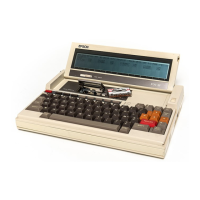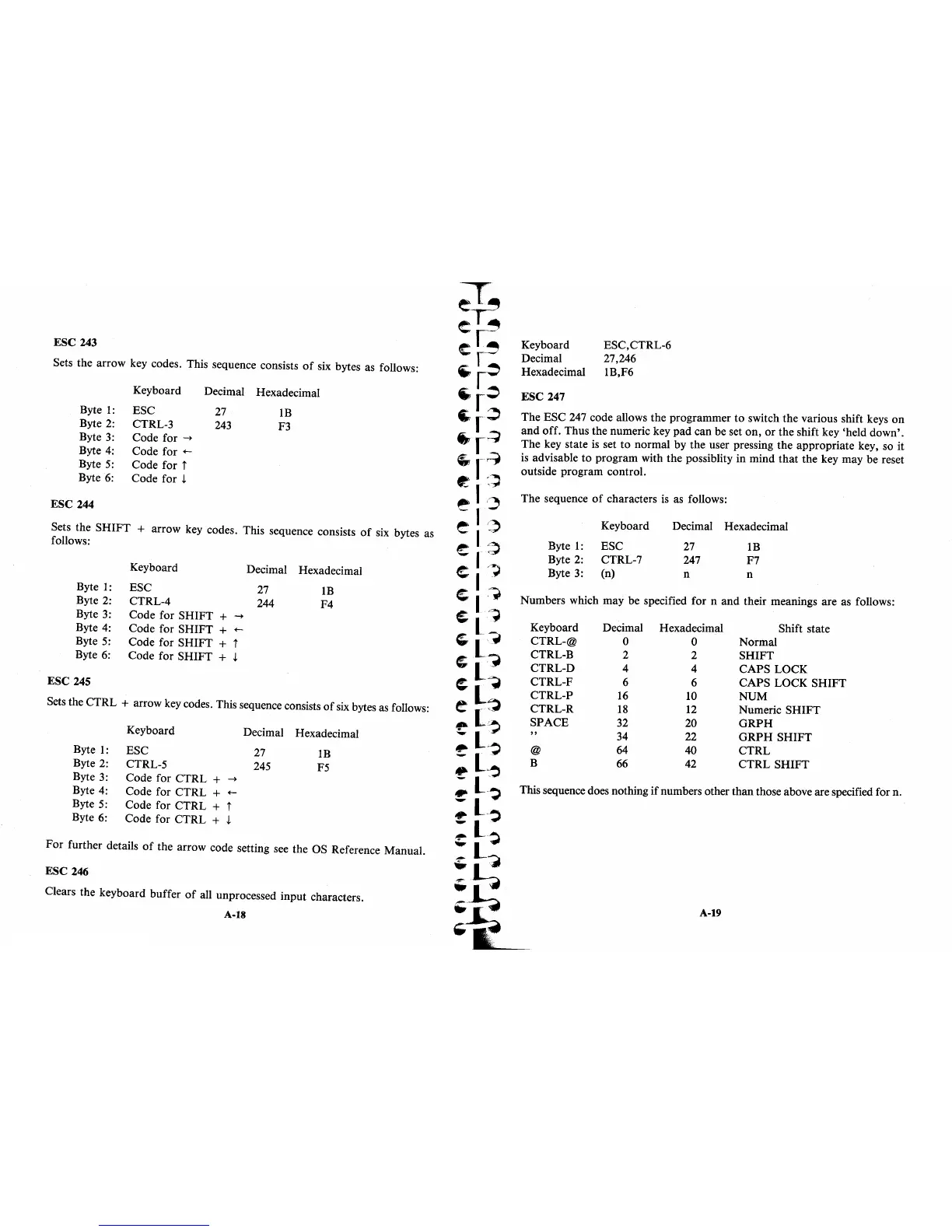ESC 243
Sets the arrow key codes. This sequence consists
of
six bytes as follows:
Byte
1:
Byte 2:
Byte 3:
Byte 4:
Byte
5:
Byte
6:
ESC 244
Keyboard
ESC
CTRL-3
Code for
~
Code for
~
Code for t
Code
for!
Decimal Hexadecimal
27
243
IB
F3
Sets the
SHIFT
+ arrow key codes. This sequence consists
of
six bytes as
follows:
Byte
1:
Byte 2:
Byte 3:
Byte 4:
Byte
5:
Byte
6:
ESC 245
Keyboard
Decimal Hexadecimal
ESC 27
CTRL-4 244
Code for
SHIFT
+ ~
Code for
SHIFT
+
~
Code for
SHIFT
+ t
Code for
SHIFT
+ !
lB
F4
Sets the CTRL
+ arrow key codes. This sequence consists
of
six
bytes
as
follows:
Byte
1:
Byte
2:
Byte
3:
Byte
4:
Byte
5:
Byte
6:
Keyboard
Decimal Hexadecimal
ESC 27
CTRL-5 245
Code for
CTRL
+ ~
Code for CTRL + ~
Code for
CTRL
+ t
Code for
CTRL
+ !
lB
F5
For
further details
of
the arrow code setting see the OS Reference Manual.
ESC 246
Clears the keyboard buffer
of
all unprocessed input characters.
A-18
Keyboard
Decimal
Hexadecimal
ESC 247
ESC,CTRL-6
27,246
lB,F6
The ESC 247 code allows the programmer
to
switch the various shift keys
on
and
off. Thus the numeric key
pad
can be set
on,
or
the shift key 'held
down'.
The key state
is
set
to
normal by the user pressing the appropriate key, so it
is
advisable
to
program with the possiblity in mind
that
the key may be reset
outside program control.
The sequence
of
characters
is
as follows:
Byte
1:
Byte 2:
Byte 3:
Keyboard
ESC
CTRL-7
(n)
Decimal Hexadecimal
27
247
n
lB
F7
n
Numbers which may be specified for n
and
their meanings are as follows:
Keyboard Decimal Hexadecimal Shift state
CTRL-@ 0
0
Normal
CTRL-B 2 2
SHIFT
CTRL-D 4 4
CAPS
LOCK
CTRL-F
6 6
CAPS
LOCK
SHIFT
CTRL-P
16
10
NUM
CTRL-R
18
12
Numeric
SHIFT
SPACE
32 20
GRPH
"
34
22
GRPH
SHIFT
@
64 40
CTRL
B
66 42
CTRL
SHIFT
This sequence does nothing
if
numbers other
than
those above are specified for n.
A-19

